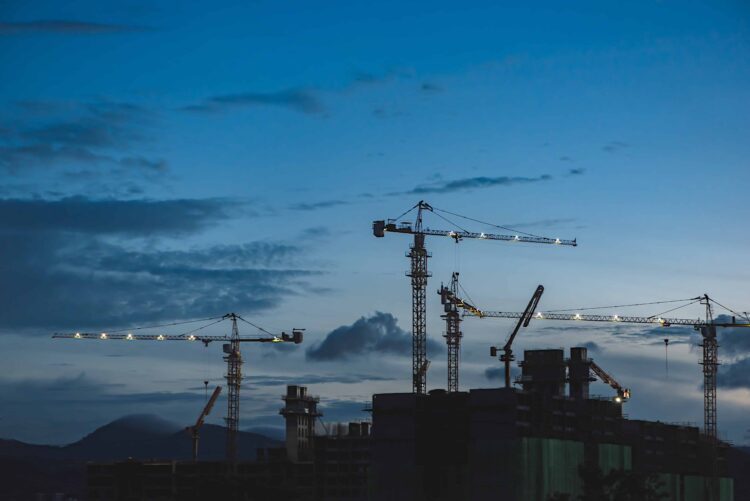SK Court Clarifies Application of Builders’ Lien Act on Public Highways Projects

Authors: Josh Morrison, Andrew Konopelny, Ethan Reis
The Saskatchewan Court of Appeal recently released its decision in Regina Bypass Design Builders v Supreme Steel LP, 2021 SKCA 82 (“Regina Bypass”). The decision provides clarification on the interpretation of Saskatchewan’s Builders’ Lien Act (“BLA”) and the implications of this decision will benefit subcontractors who provide labour or materials to public highway projects.
The BLA ensures that parties who contribute work or materials to a construction project are paid for their services, while also providing security and predictability for owners. The various processes, rights and remedies outlined in the BLA generally apply to all parties involved in a construction project. Section 5(2) of the BLA sets out certain situations wherein the Act will not apply. That section provides:
- Except as otherwise provided, the Crown is bound by this Act.
- This Act does not apply where services or materials are provided:
- in connection with a contract entered into under or pursuant to The Highways and Transportation Act; or
- in connection with the construction or improvement of a street or highway owned by the Crown.
- Notwithstanding subsection (2), this Act applies where services or materials are provided in connection with the construction or improvement of a bridge owned by the Crown other than a bridge constructed or improved under or pursuant to The Highways and Transportation Act.
The primary issue in the Regina Bypass case was whether the exemption provisions in s. 5(2) apply to all parties who provide labour and materials to construction and improvement projects on public highways, or only to the Crown and those parties who contract directly with the Crown. The majority of the Court of Appeal held that s. 5(2) renders the BLA inapplicable only to the Crown and those parties who contract directly with the Crown. Accordingly, the BLA still applies to contracts between non-government contractors and their sub-contractors, even where the work is performed in connection with a public street or highway project.
The Regina Bypass Project
The Saskatchewan Ministry of Highways and Infrastructure entered into a contract with SGTP Highway Bypass Limited Partnership (“SGTP”) for the design, construction and management of the Regina Bypass Project (the “Project”). The Project was a major undertaking in the City of Regina and entailed the construction of 12 overpasses, 40km of new four-lane highway and 55km of new service roads. After SGTP retained Regina Bypass Design Builders (“RBDB”) to undertake construction of the Project, RBDB retained Supreme Steel LP (“Supreme”) to fabricate, supply, deliver and install the steel for the Project’s bridges.
Supreme performed its work under the subcontract and subsequently served RBDB with a Written Notice of Lien for more than $7.5 million. RBDB asserted that the BLA did not apply to its subcontract with Supreme by virtue of s. 5(2). When Supreme refused to vacate its lien, RBDB applied for a declaration from the Court that the BLA did not apply to any work performed by or on behalf of it in respect of the Project or, alternatively, to any work performed by Supreme under the subcontract.
In the initial application, the Chambers judge sided with Supreme Steel and concluded the BLA did apply as between RBDB and Supreme.
The SK Court of Appeal’s Decision
RBDB appealed the Chambers judge’s decision, asserting that there is nothing in the language of s. 5(2) to limit the scope of the exemptions only to parties who contract directly with the Crown. Supreme argued that the main purpose behind the BLA is to ensure that parties who supply work or materials to real property projects are paid for their services and that RBDB’s interpretation would defeat that purpose.
A majority of the Court of Appeal agreed with the Chambers judge and held that s. 5(2) renders the BLA inapplicable only to the Crown, and those parties who contract directly with the Crown. It does not restrict the application of the BLA as between non-government contractors and their subcontractors. As a result, Supreme was entitled to file its lien and the Court dismissed RBDB’s appeal.
The Court undertook an extensive exercise in statutory interpretation, imparting a contextual and purposive approach to the ordinary and grammatical meaning of the legislative text. The majority accepted that nothing in the plain wording of s. 5(2) expressly limits the scope of the exemption to the Crown or those parties who contract directly with it. However, reading s. 5(2) harmoniously with the entire statute, the provision was capable of supporting more than one interpretation. Therefore, purpose and context must play a greater role in the interpretive exercise.
The majority observed that the principal object of the BLA is to ensure that those parties who supply work and materials to the improvement of real property are paid for doing so. This object supported the conclusion that s. 5(2) favours the application of the BLA to contractors and subcontractors. Moreover, the legislative history behind the BLA suggested that the legislature intended for s. 5(2) to spell out the situations in which the BLA would not apply to the Crown. There was no evidence of a legislative intent to limit the BLA’s scope with respect to contractors and subcontractors working in connection with public works.
The majority also found that the jurisprudence favoured the application of the BLA to non-government contractors and subcontractors. Drawing on the Court’s earlier decision in PCL Construction Management Inc. v Saskatoon (City), the majority held that s. 5(2) speaks to the question of whether or not the Crown is subject to the BLA, not to the question of whether or not the project is subject to the BLA. Courts have refused to accept that the legislature would have intended those who provide services and materials to a public project to have no security in the event of a default. Finally, in analyzing the drafting structure of the legislative provision, the majority held that the exemptions in s. 5(2) are narrowly focused on the question of whether the Crown is bound by the BLA.
Impact on Construction Projects
The implications of this decision are significant for lawyers and contractors alike. It is now settled law in Saskatchewan that the BLA applies to subcontractors who supply services to ss. 5(2)(a) and 5(2)(b) exempt projects, being those under The Highways and Transportation Act and those in connection with the construction or improvement of a government-owned street or highway.
MLT Aikins was pleased to act for Supreme Steel in this important case. If you have any questions about how this case may impact you or your organization or construction project, please reach out to one of the lawyers in our construction litigation practice group.
Note: This article is of a general nature only and is not exhaustive of all possible legal rights or remedies. In addition, laws may change over time and should be interpreted only in the context of particular circumstances such that these materials are not intended to be relied upon or taken as legal advice or opinion. Readers should consult a legal professional for specific advice in any particular situation.




